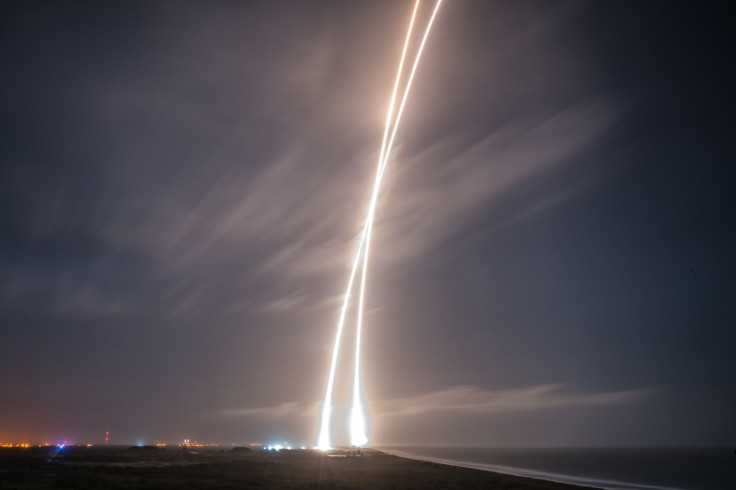What's Next For SpaceX After Historic Landing? NASA, Commercial Launches And More In 2016

After two near-misses at sea, SpaceX stuck a ground-based landing in its return-to-flight mission Monday night. After delivering its payload of 11 communications satellites for ORBCOMM Inc., SpaceX successfully landed the first stage of the Falcon 9 rocket at Landing Zone 1 at Cape Canaveral, Florida.
It's a historic feat that paves the way for a busy 2016 for Elon Musk's company. SpaceX returns to work for NASA with two spring launches, the possible debut of its Falcon Heavy rocket and further development in the Commercial Crew program that will see the return of manned launches to the U.S. by 2017.
"The Falcon rocket costs about $60 million to build. It’s kind of like a big jet, but the cost of the propellant, which is mostly oxygen and the gases, is only about $200,000, so that means that the potential cost reduction over the long term is probably in excess of a factor of 100," Musk was quoted as saying after the Falcon 9 landed.
In addition to Monday's launch being the first for SpaceX since June 2015 when the Dragon spacecraft was destroyed during its seventh commercial resupply mission for NASA, there were additional bragging rights on the table for Musk and SpaceX. In November, Amazon founder and CEO Jeff Bezos' Blue Origin landed its New Shepard space vehicle after reaching a test altitude of 62.5 miles. Musk congratulated Bezos and Blue Origin for the accomplishment, but did take care to distinguish what was being done by both companies.
Congrats @SpaceX on landing Falcon's suborbital booster stage. Welcome to the club!
— Jeff Bezos (@JeffBezos) December 22, 2015After SpaceX successfully completed a vertical landing of the first stage of the Falcon 9 rocket, Bezos spent his fifth tweet ever congratulating SpaceX. Two of his previous tweets discussed the Blue Origin landing, a third thanked Bill Gates and a fourth had Bezos championing sending Donald trump to space.
This was the seventh launch for SpaceX in 2015. Much like how this year started with a mission for NASA, SpaceX will begin 2016 delivering a payload for the space agency. The Jason-3 ocean measurement satellite -- a mission led by the National Oceanic and Atmospheric Administration -- is scheduled to launch atop SpaceX's Falcon 9 rocket Jan. 17, 2016. This will be SpaceX's first launch for NASA since the mission failure in June. The launch could be another opportunity to land the first stage of the Falcon 9, this tim at Vandenberg Air Force Base in California.
SpaceX will follow up the launch of Jason-3 with a commercial satellite launch for SES and the eighth commercial resupply mission to the International Space Station for NASA. Musk's company could welcome a new rocket to its fleet. The first flight of the Falcon Heavy rocket could take place as early as April 2016, Spaceflight Now reported. The Falcon Heavy rockets would be used for National Reconnaissance Office satellites and larger payloads to geostationary transfer orbit.
A fully funded Commercial Crew program for 2016 could lead to the return of manned launches from the U.S. to the space station. NASA has contracted Boeing and SpaceX to ferry astronauts as part of the Commercial Crew program, but the project received $1.24 billion as part of NASA's 2016 budget. NASA has already approved two crew missions for Boeing and one for SpaceX, giving the companies enough time to prepare for a future launch. Each company's spacecraft have to be certified and complete unmanned test flights before launches can begin in 2017.
© Copyright IBTimes 2024. All rights reserved.












